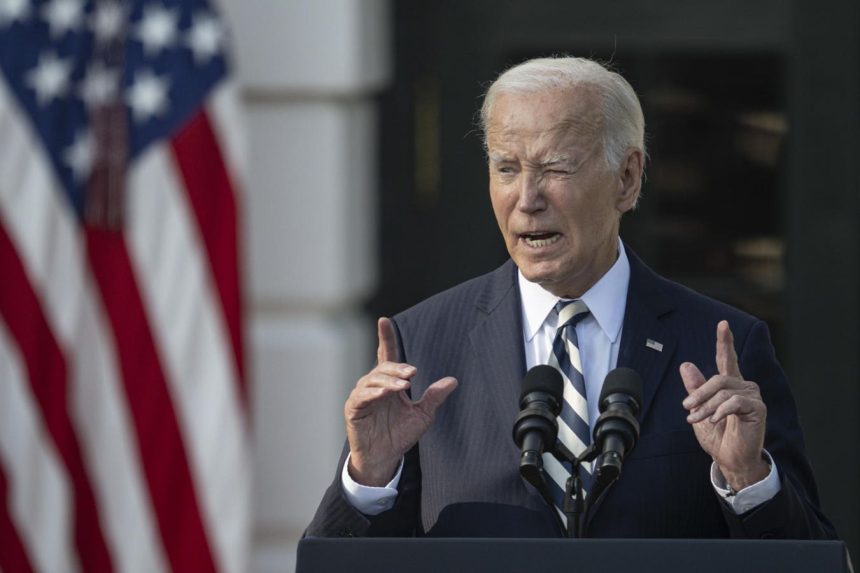A major student loan relief program that has benefited millions of Americans is about to end later this month. And once it winds down, there may be significant credit report, collections, and student loan forgiveness implications for many borrowers.
For the last 12 months, borrowers with government-held federal student loans have been in the “on-ramp” program. The Biden administration essentially extended some of the flexibilities of the Covid-19 forbearance, and limited the consequences of missing student loan payments. But as this temporary initiative concludes, the federal student loan system is poised to return to what some advocates say is a draconian collections system.
Here’s what to know.
On-Ramp Provides Flexibilities For Missed Payments, But Not For Student Loan Forgiveness
The Biden administration established the on-ramp program to ease the transition from the Covid-19 forbearance to normal repayment. During that forbearance, which lasted for more than three years, eligible borrowers did not have to make payments on their student loans, and their balances did not accrue interest. In addition, time spent in the Covid-19 forbearance counted toward student loan forgiveness for income-driven repayment plans and Public Service Loan Forgiveness.
When repayment finally resumed last fall as the Covid-19 forbearance ended, the administration wanted to ensure that borrowers had sufficient time to prepare to reenter repayment on their student loans, while minimizing the risk that some would fall into default. To that end, the Education Department established the on-ramp.
“To help borrowers successfully return to repayment in October 2023, we created a temporary on-ramp period,” says department guidance. “This 12-month on-ramp period protects borrowers from the worst consequences of missed, late, or partial payments, including negative credit reporting for delinquent payments.”
During the on-ramp, missed payments would be retroactively converted into a forbearance, and the delinquencies are not supposed to be reported to credit bureaus. And borrowers would be prevented from falling into default. The program is designed to help borrowers keep their loans in good standing during a time of transition.
However, interest still accrues during the on-ramp period, and the time doesn’t count toward student loan forgiveness for IDR programs or PSLF.
Student Loan On-Ramp And Default Protections Ends September 30th
But the on-ramp program was intended to be temporary, and it is set to end on September 30th. After that, borrowers will lose the protections of the initiative. Missed payments will lead to late fees and penalties and can also be reported to national credit bureaus, which would damage borrowers’ credit reports. Under federal law, borrowers who are delinquent (behind on payments) for a period of 270 days would go into default status.
Under a separate but related program called Fresh Start, borrowers in default have also enjoyed certain other protections for the last year. Fresh Start has shielded defaulted borrowers from collections efforts by the government and federal guaranty agencies, and has also provided a new pathway for borrowers to get out of default and return to good standing.
But Fresh Start is also set to end on September 30th. Coupled with the end of the on-ramp, this means that borrowers who miss payments and fall into default starting in October could face severe credit damage and financial penalties. Time spent in delinquency and default typically doesn’t count toward some of the most popular federal student loan forgiveness programs, like IDR and PSLF. And borrowers in default will have to contend with the vast collections powers of the federal government and federally-backed guaranty agencies which can include administrative wage garnishment, Social Security benefits offset, the interception of federal and state tax refunds, and even possibly litigation.
Student Loan Forgiveness And Reduced Payments Blocked
The Biden administration had hoped to mitigate the end of the on-ramp and Fresh Start programs by offering borrowers new student loan relief initiatives. These included the SAVE plan — a new IDR program that provides lower payments, curtails runaway interest accrual, and gives borrowers several paths to eventual student loan forgiveness — as well as a brand-new debt relief plan that could provide mass cancellation to 30 million borrowers.
But both of these programs have been challenged in court by Republican-led states, and they are now temporarily blocked as the litigation continues. The SAVE plan legal challenges in particular have caused chaos in the student loan repayment system, as millions of borrowers have been forced into forbearance, and access to IDR plans is temporarily limited as a result of broad court orders. And Biden’s upcoming attempt at mass student loan forgiveness is also now on ice following a recent court ruling.
Because of these issues, advocates for borrowers are calling on the Biden administration to extend the on-ramp program, or simply pause all student loan payments again.
“Sending tens of millions of working families a massive bill while the student loan system is in absolute shambles is simply bad federal policy, and doing it a month before the election is even worse politics,” said Braxton Brewington, spokesperson for the Debt Collective — a debtors’ union that advocates for student loan borrowers — in a statement last week. “Not pausing student loans means borrowers who were wronged by the federal government must figuratively and literally pay the price.”
“There is only one way to protect borrowers from this nakedly partisan chaos” caused by Republican-led legal challenges to the Biden administration’s student loan forgiveness and relief programs said Mike Pierce, executive director of the Student Borrower Protection Center, in a statement last month. “Secretary Cardona must suspend payments for everyone now.”
So far, the Biden administration has given no public indication that it intends on extending either the on-ramp program or Fresh Start, or pausing payments for borrowers outside of the SAVE plan forbearance.
Read the full article here
















